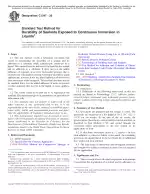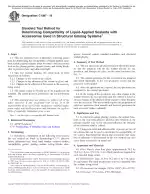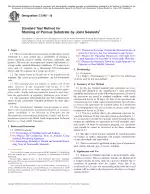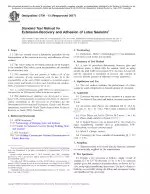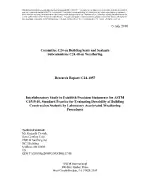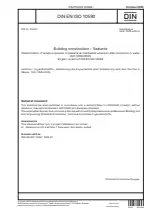ASTM C1247-20 PDF Download
Standard ENStandard Test Method for Durability of Sealants Exposed to Continuous Immersion in Liquids
Also Known As:
The ASTM C1247-20 standard is a laboratory procedure that assesses the durability of a sealant and its adhesion to a substrate while continuously immersed in a liquid. This test method utilizes elevated temperatures to accelerate the degradation of the sealant and determine its longevity. However, it is important to note that this method can only predict long-term durability if the actual service temperature is significantly lower than the elevated test temperature.
While this test method can serve as an indicator of longevity, direct correlation to actual use may be challenging for many applications. The correlation of data from this test method to applications where the sealant joint undergoes wet and dry cycles can be difficult, as some sealants and substrates may experience adhesion loss during wet periods but regain it during dry periods.
It should be recognized that this test method is an acceleration of sealant deterioration and adhesion under hot liquid conditions. In some cases, this test may be less severe than the actual application, depending on factors such as temperature, duration, nature of substrate, and composition of the liquid. Therefore, the benefit of using this test method depends on comparing the test conditions to the actual conditions of use.
It is important to note that if this test method is being used to determine the suitability of a sealant for a specific application, modification of the procedure may be required. Such modifications should be agreed upon by all interested parties involved.
| Descriptors | liquid immersion, water immersion test, building sealants, adhesion,Adhesion and Cohesion,Building Seals and Sealants,Chemical Process,Durability,Physical Test |
| ICS Codes | 91.100.50 - Binders. Sealing materials |
| Language(s) | English |
| File Size | 122.9 KB |

